Adventure awaits those who dare take the road less traveled into Iceland’s untamed and more remote areas. For many, this means driving the F-roads in Iceland, where the routes might be a bit more challenging, but the rewards are endless.
The right camper rental in Iceland and a good understanding of what to expect from the F-roads are key to a memorable and safe journey. This article tries to be that comprehensive guide to the exciting F-roads so you can plan and prep accordingly.
What are the F-Roads in Iceland, and Why Are They Special?
The F-roads in Iceland take you to places where very few have been here on the island. It’s raw, untamed, (and breathtaking!) nature.
The F-roads are unpaved roads that can sometimes have you believe that the F stands for “fun,” while other times it feels more like another explicit word, as these roads can range from uneven gravel roads with small stream crossings to rocky roads where you have to traverse what feels like boulders and cross rivers!
In reality, the F stands for Fjallvegur, which loosely translates to “mountain road,” but the name doesn’t do justice to the spectacular scenery and the adrenaline-pumping moments that come with these roads. Because the F-roads are such rough and tough drives, it’s a legal requirement to take these on with a 4x4 vehicle.
We highly recommend you ensure the 4x4 also has enough ground clearance since you’re bound to cross and go over a few interesting things on these wonderfully unpredictable roads. Luckily, campervan rentals also now offer various 4x4 options, so camper travelers don’t get left out when it comes to F-road adventures.
Most F-roads are found in the Highlands of Iceland, and a few in the Westfjords. Due to both the location and the conditions of the F-roads, the roads are kept closed during the colder months of the year, which often leaves only the summertime when you’re guaranteed to find all the F-roads open for the road trip of a lifetime and to thoroughly explore these regions.
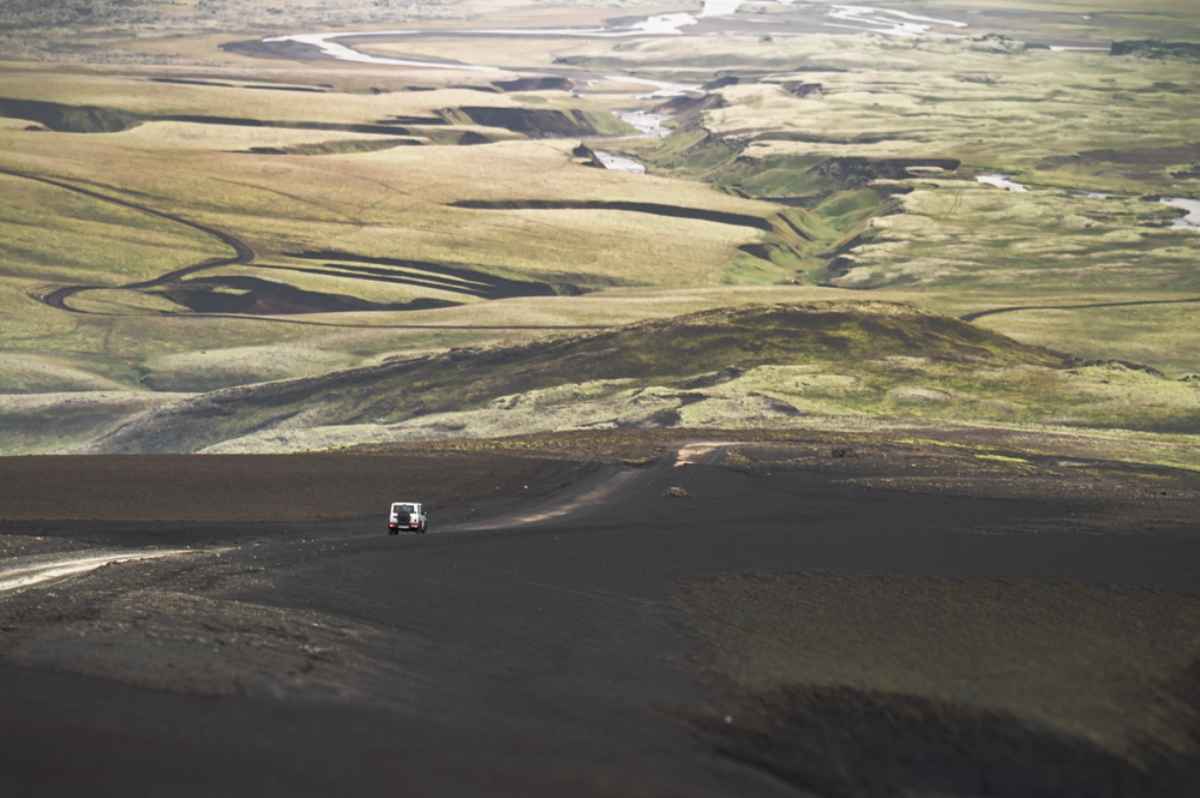
When Do F-Roads Open and Close?
As we just touched on, the F-roads are closed throughout certain times of the year and are mostly only open between mid-June and September. This is because the roads can either be completely inaccessible due to snow and ice, or river crossings can be impossible due to the amount of meltwater rushing through.
However, the opening and closing times of the individual F-roads can vary slightly from each other, so you’ll need to take this into account when planning your trip.
Estimated Opening and Closing Times of the F-roads in Iceland
Although opening and closing times can be somewhat earlier or later, depending on conditions, the following are the general opening and closing times for each F-road in the different regions:
|
Road |
Earliest opening |
Latest opening |
Median opening |
|
F206 |
12th June |
1st July |
21st June |
|
F208 |
5th June |
8th July |
22nd June |
|
F210 |
21st June |
15th July |
3rd July |
|
F225 |
28th May |
24th June |
16th June |
|
F261 |
21st June |
15h July |
5th July |
|
35* |
22nd May |
15th June |
3rd June |
|
F26 |
20th June |
13th July |
5th June |
|
F752 |
26th June |
13th July |
7th July |
|
F821 |
28th June |
24th July |
12th July |
|
F88 |
14th June |
1st July |
22nd June |
|
F894 |
14th June |
6th July |
25th June |
|
F864 |
31st May |
29th June |
12th June |
|
F902 |
14th June |
30th June |
22nd June |
|
F905 |
11th June |
30th June |
19th June |
|
F910 |
11th June |
26th July |
9th July |
|
550* |
4th May |
19th June |
28th June |
|
52* |
16th April |
16th May |
2nd May |
*Please note that the F-roads’ opening and closing times are not merely suggestions. If you do not adhere to them, you can be fined (and our pricey fines might require you to remortgage your house), get stuck, or damage the vehicle (any claims for which will be rejected by the insurance company as you were not allowed to drive there in the first place).
How to Check Real-Time Road Status of the F-roads in Iceland
If you ever feel a bit uncertain about whether an F-road is currently open or closed, or just need some info on road conditions, our Umferdin website should be your go-to. Here, you will get updated daily information and can track the road conditions of all roads in Iceland.
Umferdin is incredibly handy, and we don’t just recommend it for planning a camper road trip beforehand, but double-checking the latest on the roads (any) before heading out.
Do You Need a 4x4 Camper to Drive F-Roads?
As mentioned, driving the F-roads with a 4x4 is a legal requirement (whether with a standard rental vehicle or camper). Any attempts to drive these roads in a 2-wheel drive are illegal and reckless and can have disastrous consequences (for your safety as well as your finances).
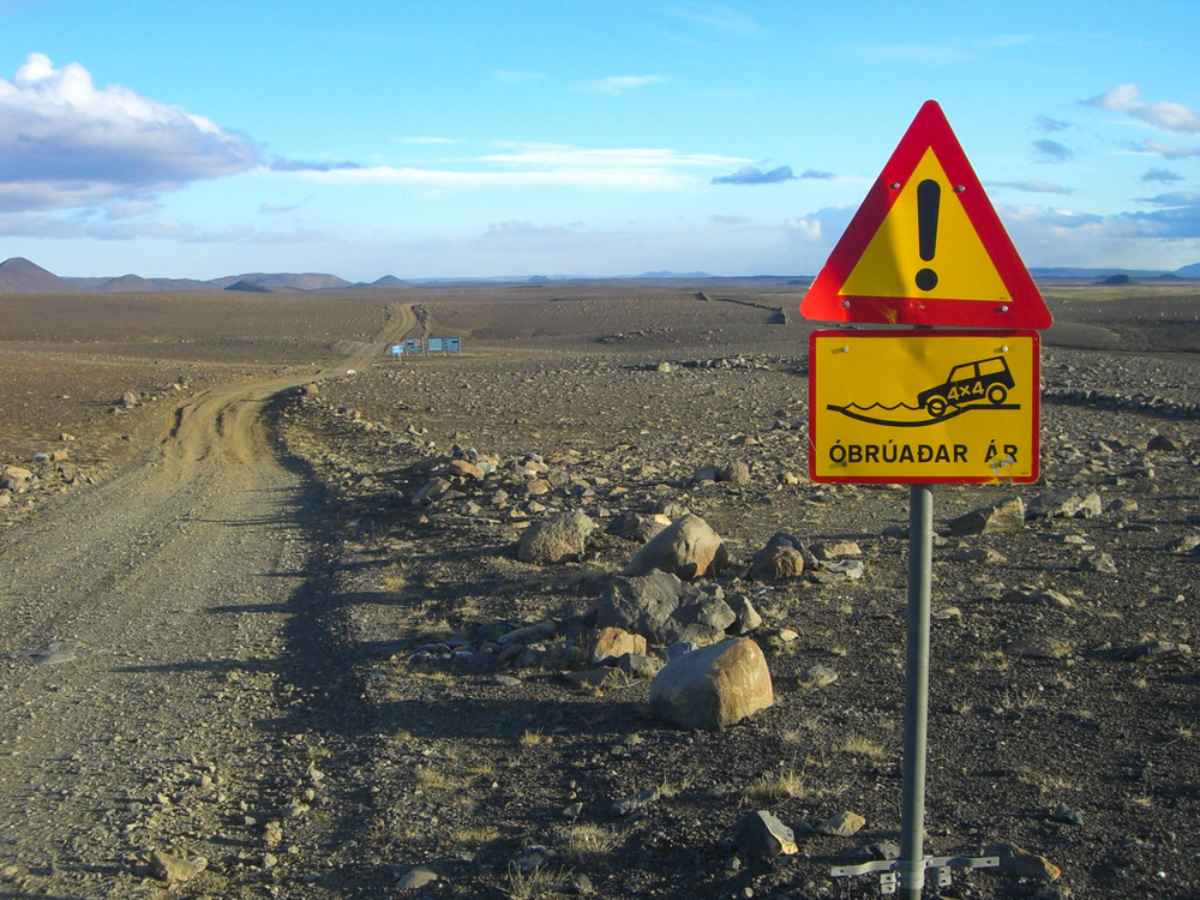
Icelandic Law and Vehicle Requirements
It’s essential to properly understand the scope and consequences of Icelandic Law when it comes to driving the F-roads in Iceland. As you already know, driving the F-roads in a 2-wheel drive or driving on them while they’re still officially closed is illegal. Not adhering to these laws can result in two things:
- Hefty fines: Icelanders don’t play when it comes to rulebreakers, and law enforcement will take you to task when caught. You’ll receive such a hefty fine that your entire holiday budget will immediately be blown.
- Costly charges: While help will be on call 24/7 for law-abiding citizens, lawbreakers can expect a costly and uphill battle (perhaps literally). If you get stuck or have an accident where you shouldn’t be driving or in a car, you shouldn’t be driving those roads with, any rescue efforts and damages will be for your own pocket!
We’re sure you’ll agree that the price (quite literally!) you’ll need to pay for your transgression is definitely not worth the risk.
Benefits of 4x4 Campers
Driving the F-roads in Iceland with a 4x4 camper is not just an arbitrary and lawful must; it actually offers many benefits to your journey. These include the following:
Rough & Tough Yet the Ultimate in Comfort
A 4x4 camper is a convenient blend between a hardy vehicle that can tackle any challenging road or route while you still have all your creature comforts with you. Depending on which campervan you choose, these comforts can extend much further than just having useful gear, enough storage space, and a comfy bed; they can also include amenities such as a kitchen, bathroom, and shower.
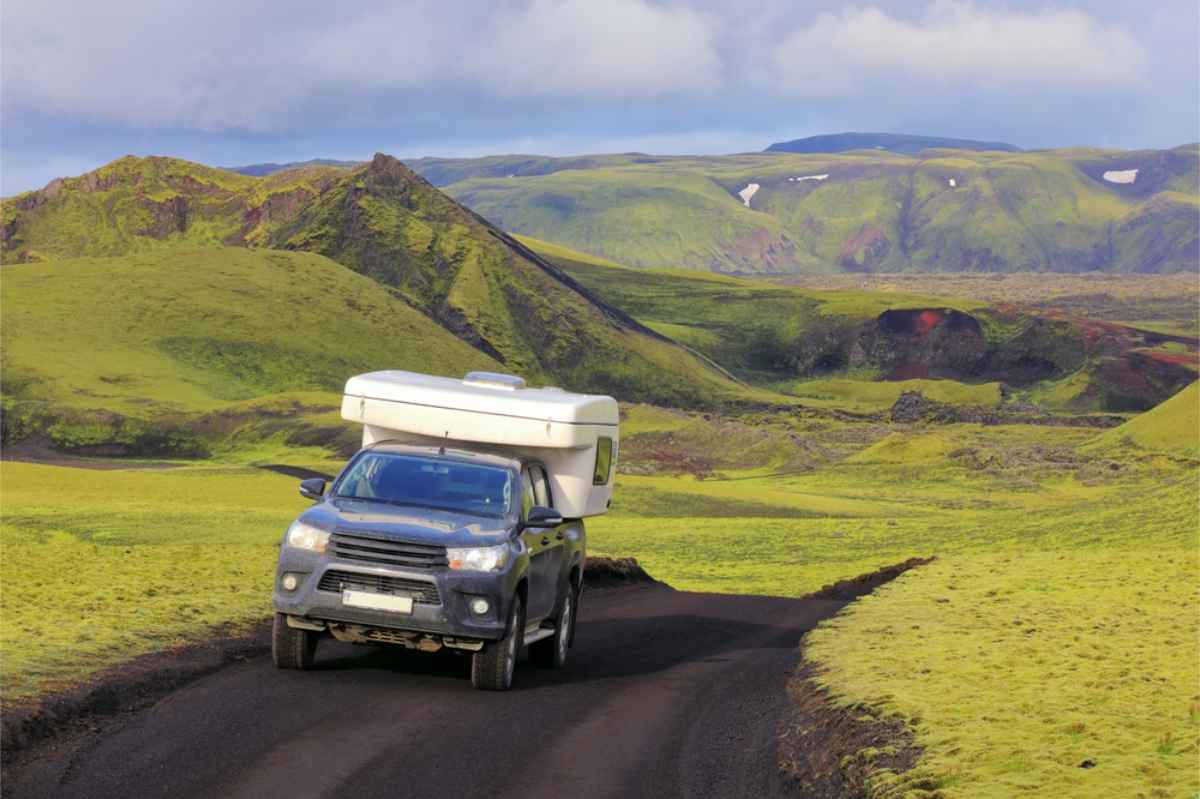
The Ultimate Freedom and Self-Sufficiency
A campervan allows you to travel as freely as possible and be as self-sufficient as possible. Not only is your trip not dictated by a tour company’s schedule, but you also don’t need to worry about strict check-in times at pre-booked accommodation venues.
While wild camping is a thing of the past here in Iceland, we still have plenty of campsites that don’t require any pre-booking or have plenty of spots available, so you can pretty much plan a trip with impromptu overnight stops. Depending on the type of camper you choose, you also won’t need to rely on the facilities and amenities around you. As long you prepped properly, you’ll be able to make food, shower, etc., wherever you go.
The other advantage, of course, is that you won’t get dictated much by the weather or road conditions. Unless it’s truly harsh and extreme, you’ll still be able to continue with your journey, irrespective of muddy, rainy conditions or a few obstacles in the road.
Peace of Mind
Just knowing you have a 4x4 that can take on most conditions already brings a sense of relief and peace of mind to your trip. While someone with a 2-wheel drive might feel a tinge of panic when they see that river crossing sign, you can rest assured the right vehicle can help you get safely to the other side.
And where obstacles such as rocks can often leave 2-wheel drivers anxious about damage to their undercarriage, the high clearance of a 4x4 allows you to drive over these freely without any fear of having to call the insurance company.
It is very important to keep in mind that there are different makes and models when it comes to 4x4 campers. Please chat with your rental agent to ensure you choose the best one for your planned route and itinerary. It is also very important when it comes to choosing your rental insurance. So, get some guidance from your rental agent to ensure you’ve got sufficient cover for your specific camper rental, route, and itinerary.
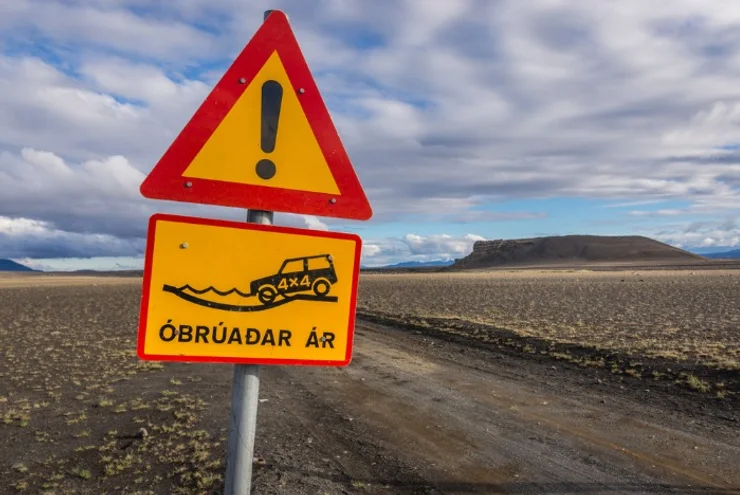
Some of the Best F-Road Routes for Camper Travelers
Some F-roads can be tricky to navigate with a camper, and some F-roads are really not recommended for first-timers. With this in mind, we compiled a list of some of the best F-road routes for camper travelers. These not only offer incredible scenery but will also provide some assurance that you’ll be able to drive and complete these routes with some ease. These routes are:
Landmannalaugar via F208
Landmannalaugar is a geothermal wonderland, so driving the F208 means driving through lava fields, hot springs, bright blue lakes, and multicolored mountains.
Offramp: The F208 south can be taken from the Ring Road near Vik.
A Few Highlights Along the Way:
- Landmannalaugar Hot Springs
- Ljotipollur Crater Lake
- Frostastadavatn Lake
Difficulty Level: Moderate. This route is very manageable in a 4x4 with high clearance since it has a few river crossings and come can even be avoided if you park right before the campsite and simply walk across the platform. However, if you still want to cross it, we do recommend you double-check water levels before heading out.
Recommended Overnight Stay: Landmannalaugar Camping. A well-equipped campsite with communal bathrooms and showers, and plenty of hiking trails to explore your surroundings.
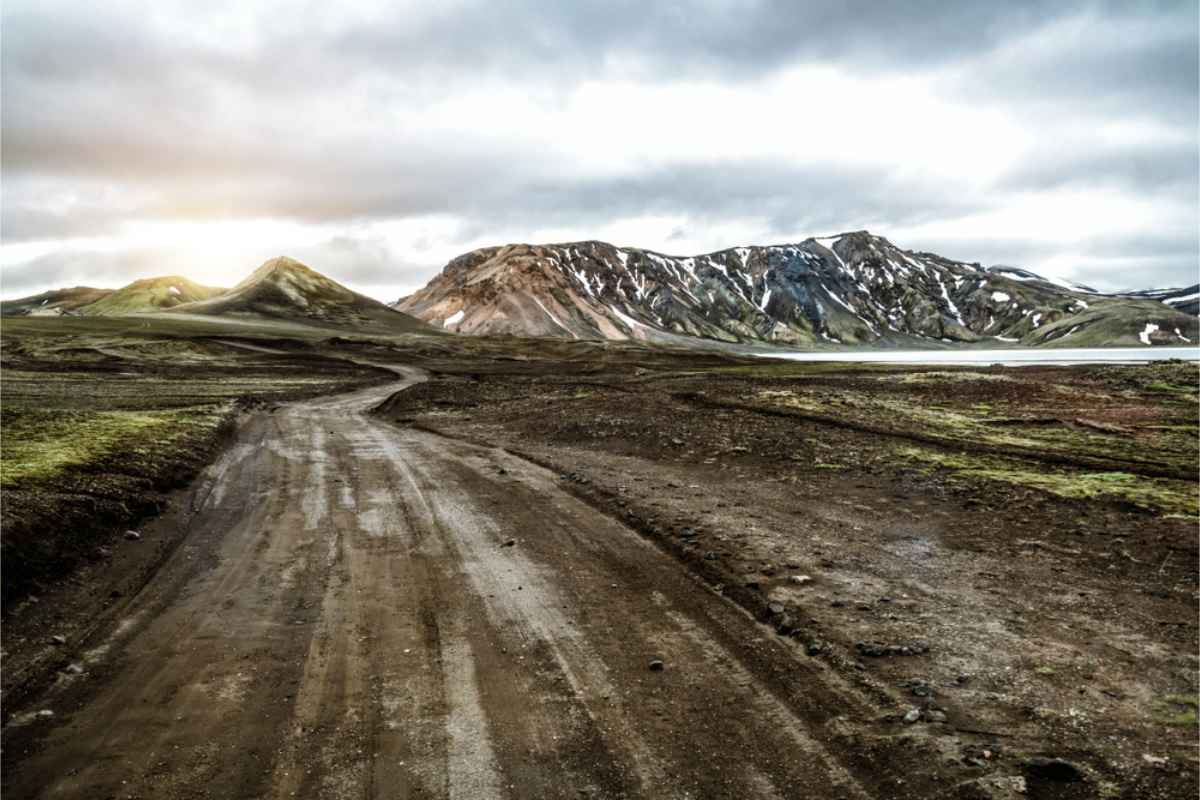
Askja via F88 and F910
Found in the heart of the central Highlands, Askja is a volcanic crater filled with iconic milky bright-blue water throughout the warmer months of the year before it freezes over during the colder months. The silence and isolation you’ll experience on this route and the incredibly untouched landscapes simply cannot be described to anyone.
But take note that this vast and isolated landscape brings with it extra responsibility and prep work since there are no gas stations or shops for over 200 kilometers. We highly recommend fueling up beforehand and bringing extra fuel along. Also, stock up on extra food rations and water.
Offramp: Take the F88 north from the Ring Road, then connect to the F910 east towards Askja.
A Few Highlights Along the Way:
- Herdubreid Mountain
- Viti Crater (here you can swim in its geothermal lake as long as conditions are right)
- Odadahraun Black Sand Beach
Difficulty Level: Challenging. This route has multiple river crossings, rough roads, and long distances without service (so be sure to have hard-copy maps and downloaded offline maps nearby). We’d recommend taking this route only if you are an experienced driver with a well-equipped and sturdy 4x4 with plenty of gear and accessories to take care of any hiccups along the way.
Recommended Overnight Stay: Dreki. Although famous for their huts, you can camp next to the huts without any prior booking. Dreki has communal kitchens, bathrooms, and showers, but only the bathrooms and showers are available to those camping.

Þórsmörk via F249
Thorsmork is paradise for any nature lover; think lush green valleys, birch forests, moss-covered cliffs, and beautiful glacial streams flowing through. The F249 is the only way to this fairytale landscape, also ensuring that the landscape remains as untouched as possible with less foot traffic.
Offramp: Take the F249 north from the Ring Road near the Seljalandsfoss Waterfall.
A Few Highlights Along the Way:
- Stakkholtsgja Canyon
- Gigjökull Glacier Tongue
- Many, many, MANY hiking trails
Difficulty Level: Extremely challenging. This route is not for the faint of heart and should only be tackled with plenty of off-road driving experience and a hardy camper with plenty of gear and accessories to get you out of minor mishaps or incidents. But as tough as this route is, the reward is well worth the trouble!
Recommended Overnight Stay: Basar Campsite. A well-equipped campsite with lots of emphasis on community. You can expect communal bonfires and even a possible live event when camping there.

Driving Tips for F-Roads in a Camper
If this is your first time taking on our F-roads, or it’s just your first time exploring a country in a camper, the following tips and advice will come in handy:
River Crossings: What You Need to Know
River crossings are one of the most exciting things about driving the F-roads in Iceland. Although this might be slightly intimidating for beginners, and we do not recommend doing so in Iceland if it is your first fording experience ever. Still, we can assure you that with the right knowledge and approach, river crossings on these roads can be exhilarating and perfectly safe. This is what you need to know:
Always Assess First
In the same way you don’t simply dive head first into a pool of water you don’t know, you don’t just put the pedal to the metal whenever you see a river crossing on route. Check out the depth and the strength of the current. Make sure you also check the weather in nearby locations, as the rain in higher lands can create a sudden increase in water level down the river.
If the depth and the current seem manageable, you can even try walking across first to ensure you drive the best possible way through. If it’s at all possible and there are other cars or campers also waiting to cross (a rarity in such remote regions), then have them go first and follow their example.

Choose Your Spot Wisely
It’s important to cross a river at the right spot. If you have any choice in the matter, always try to cross at the river’s widest and shallowest part and try to avoid those narrow and deeper sections.
Low and Slow is the Way to Go
You need to cross the river in a low gear, enter the water slowly, and then keep a consistent, slow, and steady pace all the way through to the other side. Don’t try to change gears or stop along the way. Otherwise, the engine might stall and flood, and you’ll be left stranded.
Always Move Downstream
You will never cross a river in a straight line. Angle the camper in such a way that you’re slightly driving downstream all the way through. This way, you’ll get a little help from your good friend, the current.
Accept When It’s a No-Go
We completely understand; it’s tough to plan the adventure of a lifetime only to realize it’s not going to happen for you this time around. But your safety should always be your priority! If the water looks too deep, the current seems too strong, or the water is muddy, it’s time to call it a day. Although 4x4 campers vary when it comes to their specs and limitations, we’d recommend not taking on any water higher than 70 centimeters.
If you’re unsure of what your specific camper can handle, please chat with your rental agent. It’s important to note that you’re more likely to experience sudden increases in water levels when we’ve entered spring (from March) since the rivers will be flooded with meltwater from winter’s ice and snow, and the warmer temperatures will also lead to more melted glacier water. Even with this, locals with knowledge about the area will be happy to assist with providing info and guidance (whatever you can’t get via Umferdin).
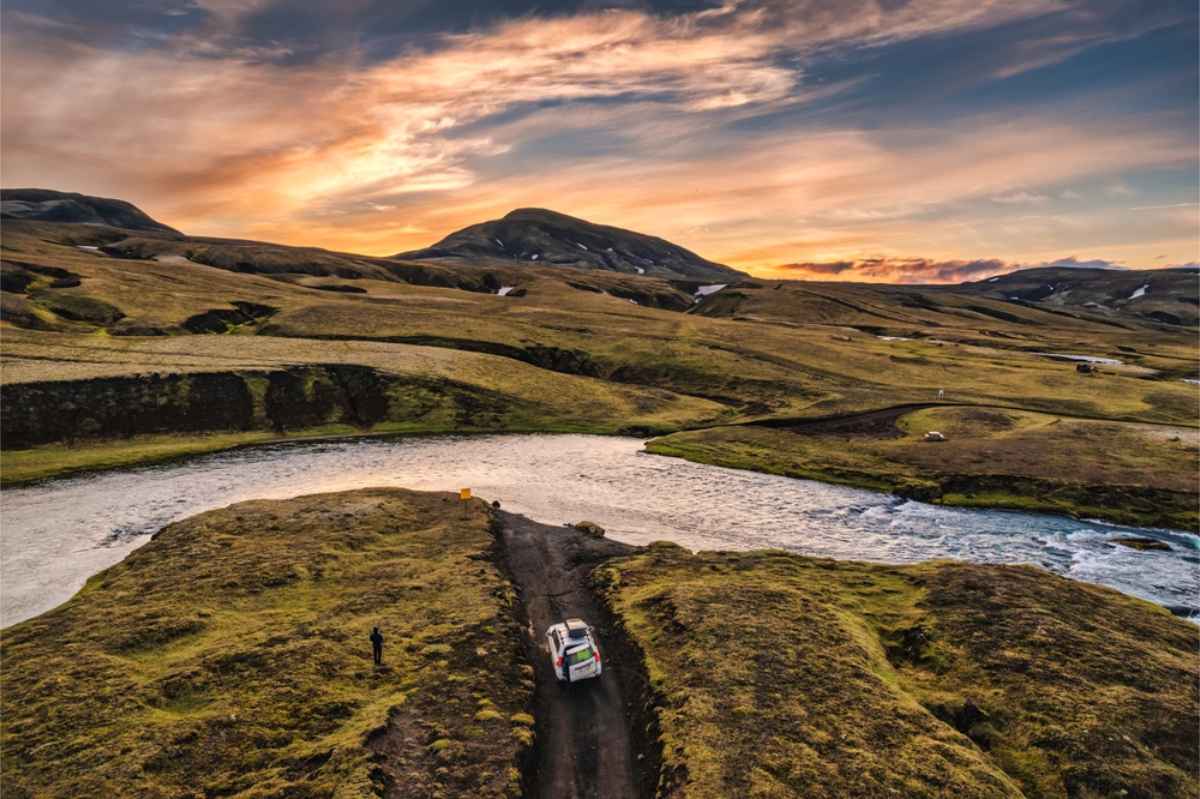
Speed, Safety, and Navigation
There are a few basics to remember when driving the F-roads in Iceland:
Keep a Slow and Steady Pace
The F-roads are unpaved and uneven, with plenty of obstacles and loose gravel, so this is no place to test your Formula 1 skills. Drive slowly (between 20 and 40 kilometers an hour) and keep a steady pace. Remember, if you suddenly speed up, you risk kicking up gravel or sliding and losing control of the vehicle.
Remain Vigilant When it Comes to Hazards
Because the F-roads are unpredictable and road conditions are constantly changing, it’s best to always be on high alert and look out for any potential hazards. This can be sharp rocks (a tire’s worst nightmare!), potholes, a lot of loose gravel, or blind corners. These potential hazards are also why you should always keep both hands on the wheel so you’re ready to steer the camper out of trouble if any should arise.
Lower the Gears On Steep and Loose Sections
To have better control over your camper, always lower your gears before driving up a steep section or driving over extremely loose gravel sections. You should also avoid braking suddenly on these sections since this can cause you to skid and lose control.
Ensure That You Have Maps with You
As we already mentioned, many parts of the F-road routes are extremely remote and where signals are practically non-existent. This means that most navigation apps and GPS devices will be useless. So, ensure you have hard copy maps and downloaded offline maps of all your planned routes so you’re not left not knowing which way to turn (literally!).
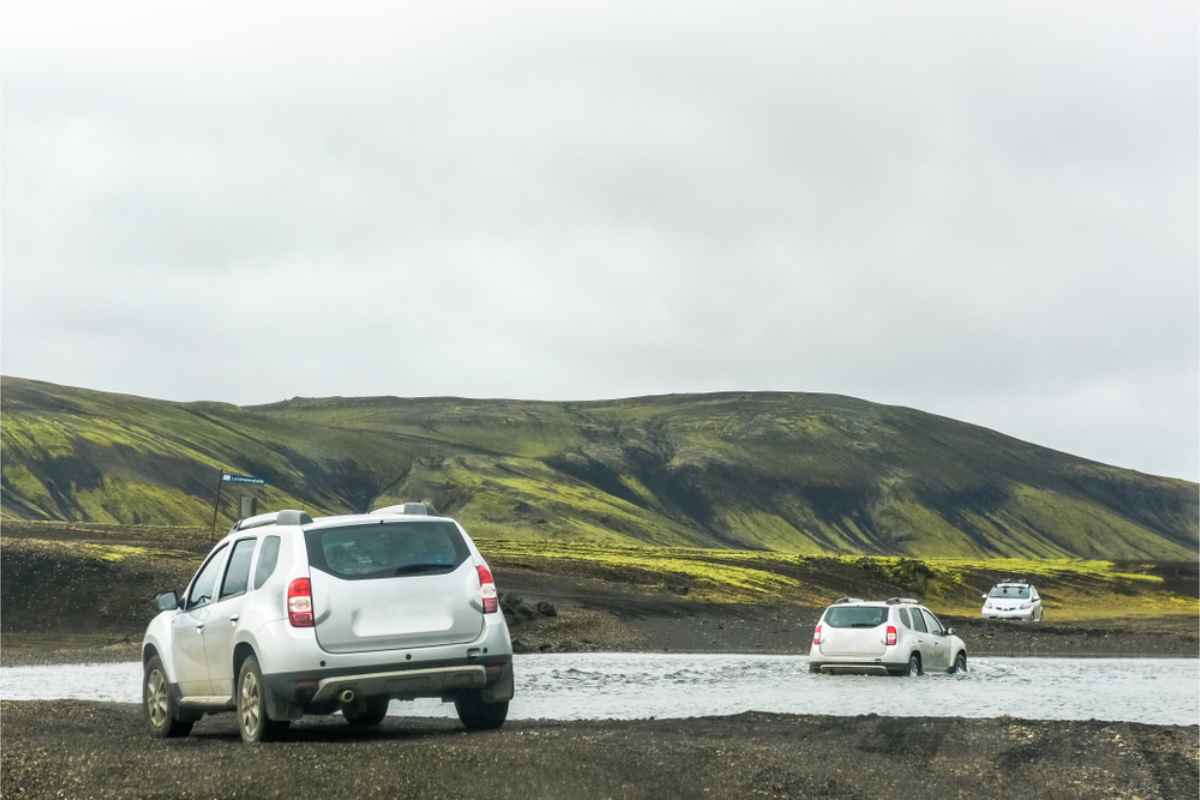
Narrow Roads Mean Only One Gets to Go
There are many parts of the F-roads that are pretty narrow, and there’s simply no way two vehicles can pass each other safely. This is especially true for uphills and river crossings. Here, the rule of thumb of whoever gets there first goes first is a good rule to follow.
Fuel, Food, and Emergency Prep
When it comes to preparedness and safety on the F-roads, the following is important:
- Remember that you’re going into extremely remote areas where gas stations are few and far between. To avoid finding yourself stranded on the side of the road, we highly recommend you fuel up at the last gas station you can find before heading into the “unknown” and also take some extra fuel just in case.
- Shops also become scarcer in these remote areas, so stock up at the last grocery store you get before heading out in the remote area, and ensure that you also stock up on some emergency rations and water. Emergency rations should be things such as tin food, nuts, and energy bars that won’t spoil easily. This is just to ensure you don’t need to add dehydration and starvation to your list of worries when you get stuck somewhere and have to wait for help to arrive (in these remote areas, it can take a while).
- If you’re a solo traveler or are all traveling together in the same camper, it’s always a good idea to let people in on your itinerary and make communication plans. This can be with friends and family back home, as well as your rental agent in Iceland. This way, someone will know when to sound the alarm if you don’t reach out or return as per the arrangement.
- Something that many miss and are not always included in their rental package is a first aid kit. This kit can be incredibly useful, especially in emergencies where what you do in the first few moments ends up being critical.
- Save our emergency number (112) on your phones. This number can be phoned for every emergency possible, such as an accident, vehicle breakdown, medical emergency, fire, and so forth.
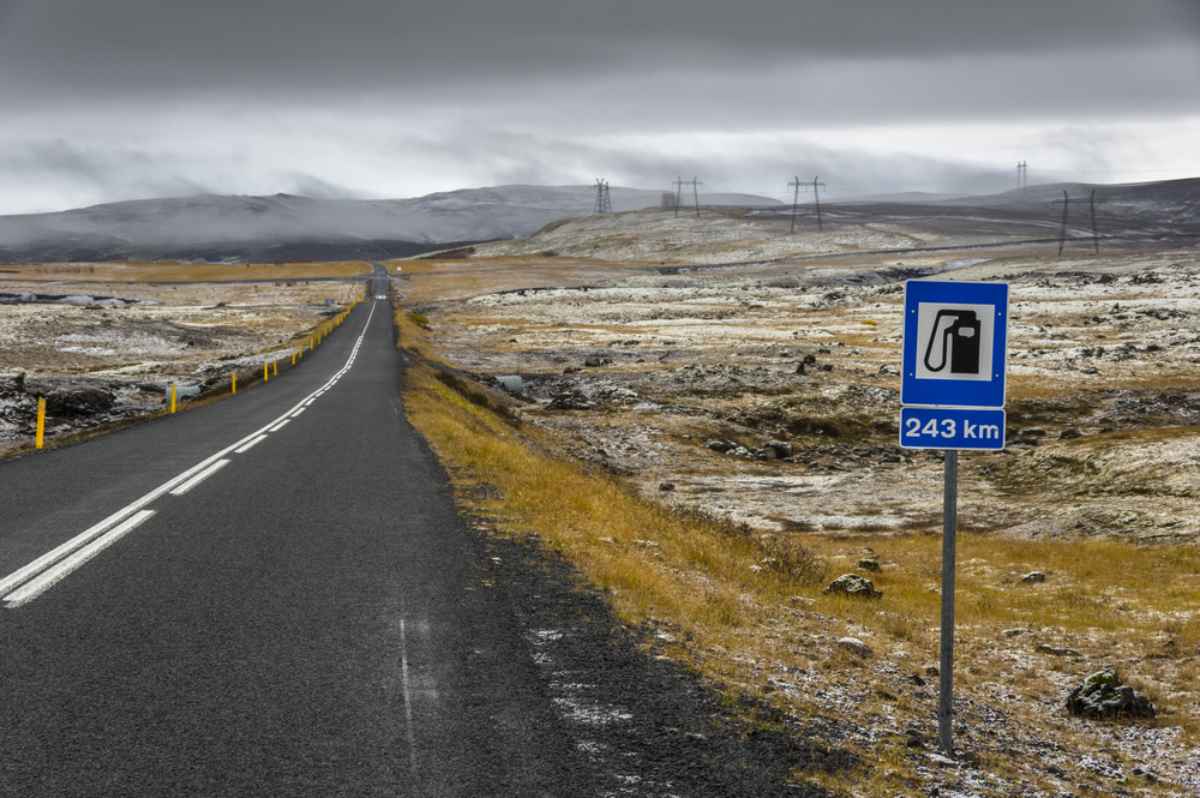
The F-roads and Environmental Responsibilities
Iceland, especially its more remote and untamed regions, has very fragile ecosystems, and we Icelanders take our environmental responsibilities very seriously. Please adhere to the following to keep our landscapes protected for future generations to enjoy:
Don’t DIY Your Own F-road Route
Our wild and untamed landscapes don’t give you the right to drive wild and untamed. You must always stick to the designated roads and pathways here in Iceland. This is for two reasons:
- Your own safety: If you create your own “road less traveled,” we won’t know where to go looking for you if you get lost or stuck, and Ed Sheeran can tell you all about what often lies just beneath the surface here in Iceland – Ouch!
- Our Environment: As we already touched on, our ecosystem is pretty fragile here in Iceland, and there might be a good reason why the designated road or pathway is where it is. We have things such as underground boroughs where Puffins nest and a rare type of moss that can take up to a decade to recover from damage (if at all). So, don’t allow yourself to be the reason for the destruction.
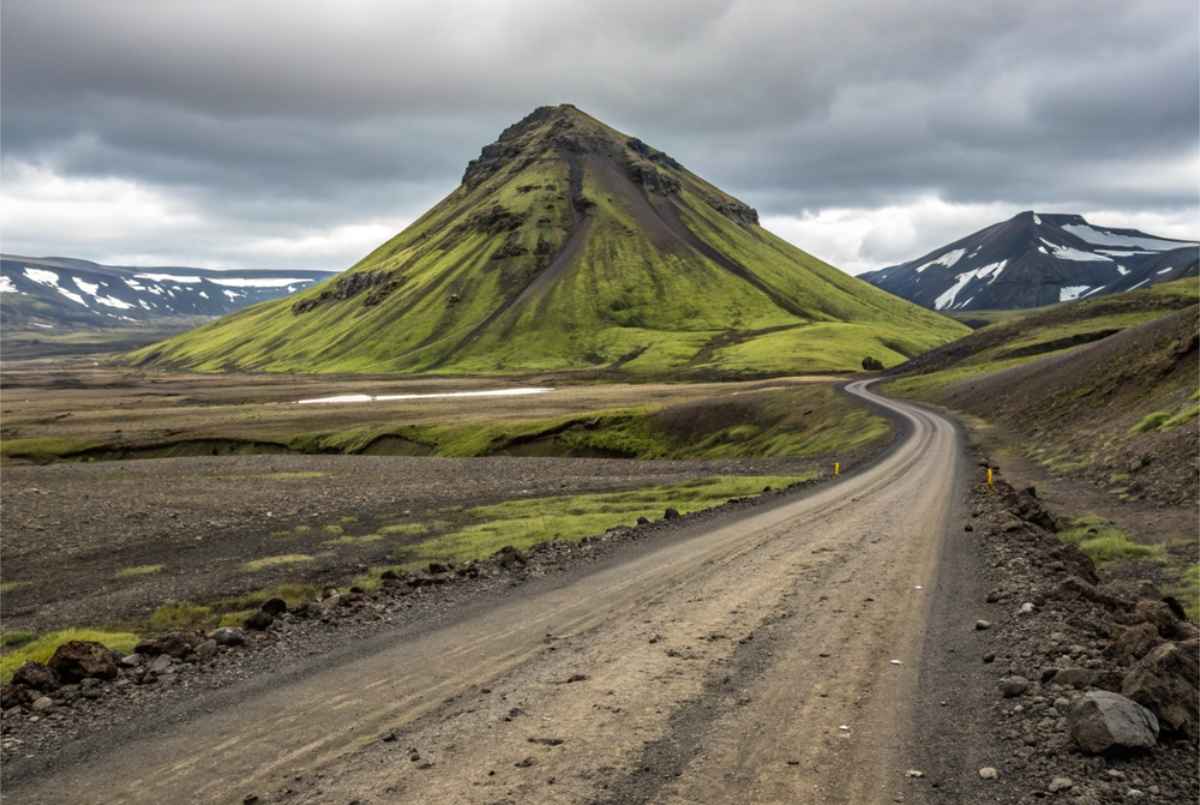
Follow a “Leave No Trace” Principle
This does not just relate to leaving trash and rubbish behind. A “leave no trace” principle means that you should leave the area pretty much as you found it: as if you were never there. This means no trampling of the flora and no doing your personal bathroom “business” outside of an actual bathroom. Treat the land with respect.
Must-Have Gear and Camper Add-ons for Highland Roads
We’re sure you know how to pack for a trip, but the following items can really make a difference on an F-road trip. If you’re not sure if it’s included in your rental package, just chat with your rental agent. The item list is as follows:
- Spare Tire and Puncture Repair Kit
- Compact Travel Shovel and Tow Rope (these are essential items when you get stuck somewhere)
- Waterproof boots and waders (this will usually be your responsibility and will just help you stay dry if you ever need to get in the water at river crossings)
- GPS Device, Compass, Hard Copy, and Offline Maps
- Additional Fuel and Water Containers
- Outdoor Camping Cooking Gear and Accessories
- Satellite Phone and Emergency Beacon (when you get in trouble while out of signal range)
- Thermal Sleeping Bags (some rentals do not include linen, so this is a very important subject to raise)
- Flashlight or Headlamp (we prefer the latter since it allows your hands to stay free)
- Tire Pressure Gauge
- First-aid Kit
- Basic DIY Tool Kit
- Jump Start Kit
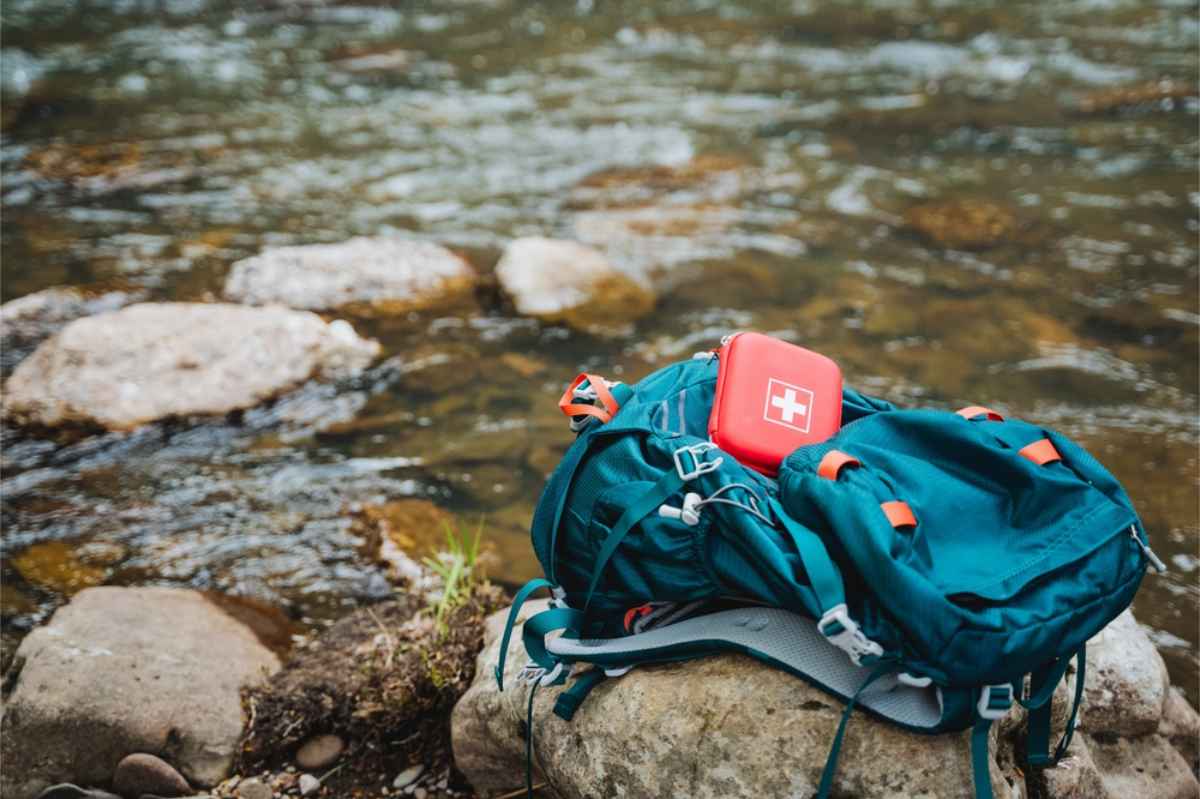
When Not to Drive the F-Roads in a Camper
We’ve already briefly touched on the subject, but there are certain times that the F-roads are best avoided (and will probably be reflected on Umferdin):
- After heavy rains and storms.
- After exceptionally warm weather (which will increase glacial meltwater and increase water levels at river crossings).
- Rainy or foggy conditions that make visibility difficult.
We understand that it can be disappointing if your F-road road trip plans get derailed, but we suggest having the following as your backup plans for instances like these. These will ensure you still get the same stunning scenery but at less risk:
- The Ring Road – A paved and well-maintained circle route that wraps around the island and will give you at least a taste of each region in Iceland.
- The Westfjords Way – This route explores the other, more remote region in Iceland, where you can more easily avoid the F-roads while admiring the untouched landscape.
- The Snæfellsnes Peninsula – This Peninsula is also referred to as “mini Iceland” since it truly has a little bit of everything the island has to offer. This is usually one of the go-tos for those with limited time in Iceland.
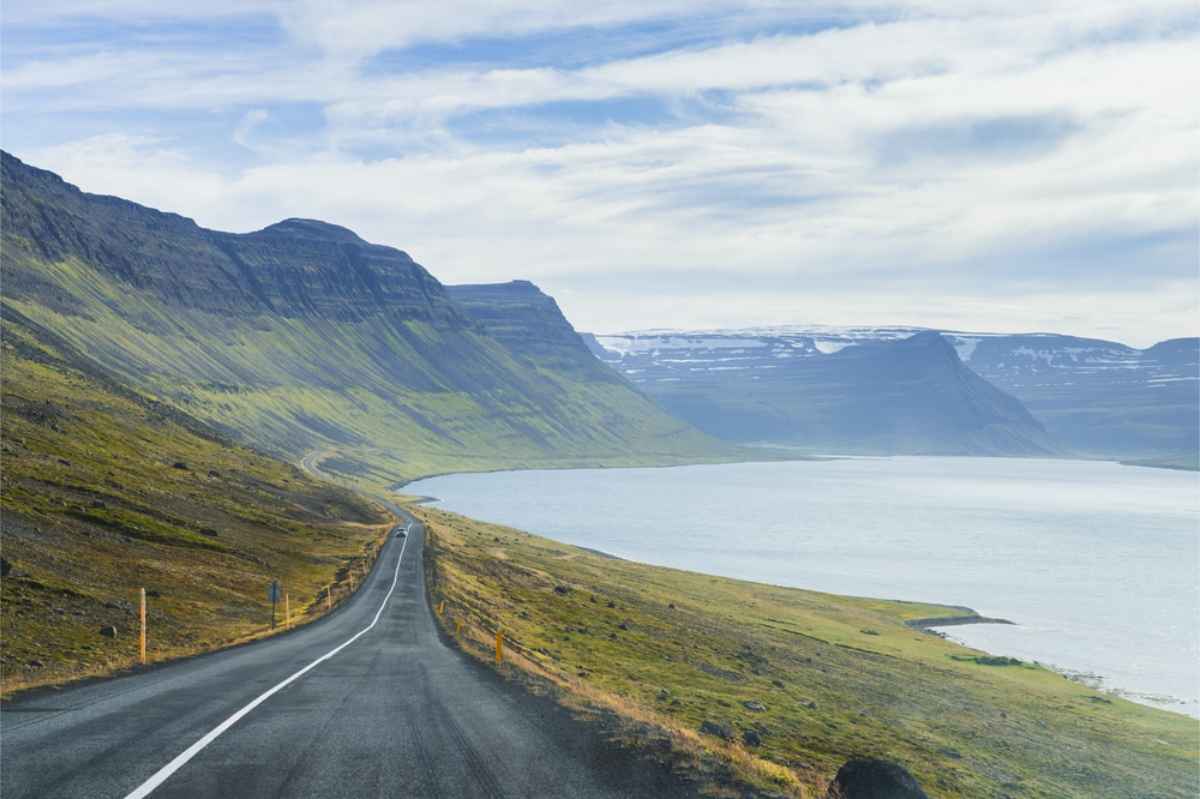
Is Exploring F-Roads in a Camper Worth It?
Just like most things in life, the F-roads are subject to personal preference. If any of the following resonates with you, then the F-roads are a definite must for you:
- You’ve got an adventurous spirit.
- You’re always up for the challenge – a little obstacle or river crossing is not going to stop you.
- You’re not one for the crowds.
- You enjoy taking the “road less traveled” and don’t just want to do all the cliché touristy things when exploring a country.
- You have a deep appreciation for nature.
- You want to captain your own adventure without being dictated to by others.
- You enjoy camping but don’t want to rough it – you need your creature comforts.
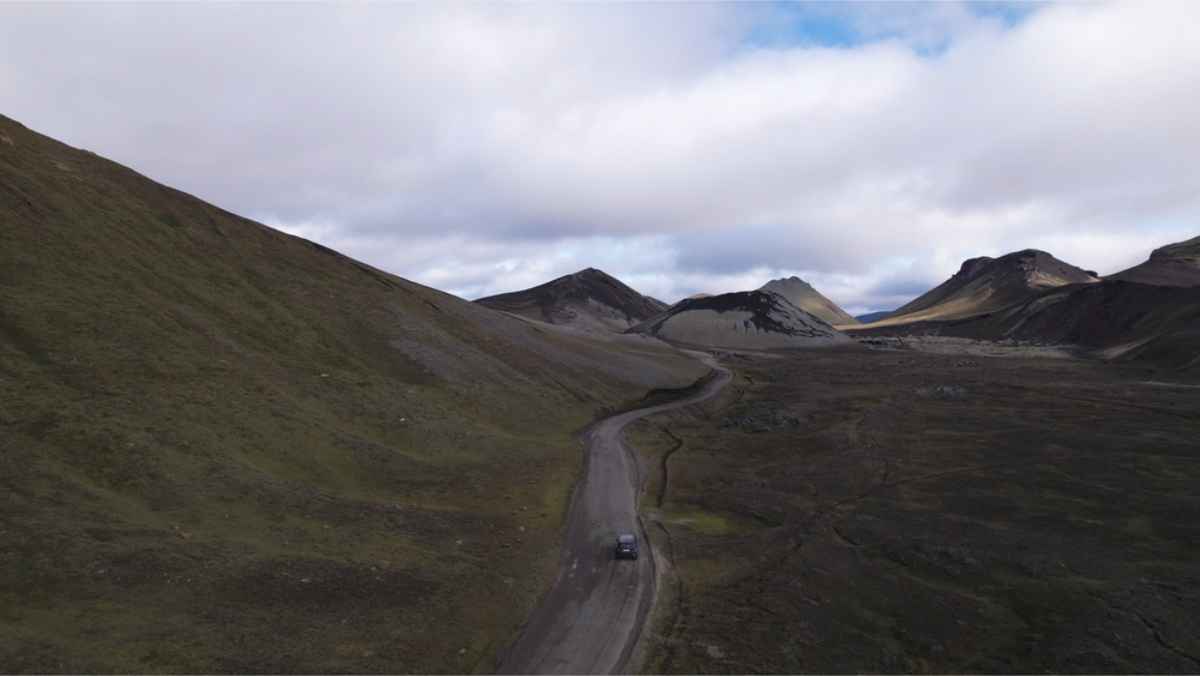
Frequently Asked Questions About Driving the F-roads in Iceland With a Camper
Below, you will find the answers to some of the most frequently asked questions about driving the F-roads in Iceland with a camper:
Are the F-roads Dangerous?
The F-roads can be dangerous if you’re driving them with the wrong vehicle, you’re driving them while they’re officially closed, or you’ve simply come completely unprepared. If you read and follow our guide, the F-roads will be a safe and extremely rewarding experience.
Can I Drive the F-roads Alone?
You can drive the F-roads alone, but as with most solo travel, it will require some extra effort: extra caution, extra preparedness, extra checks on weather and road conditions, and, of course, we highly recommend you keep people updated and involved in your itinerary (both at home and in Iceland).
Are There Guided Tours of the F-roads?
There are some guided tours of the F-roads, but it will definitely not be the same experience as on a self-drive. If you’re looking for an interesting day outing through the Highlands, you should go with one of the Super Jeep Tours.
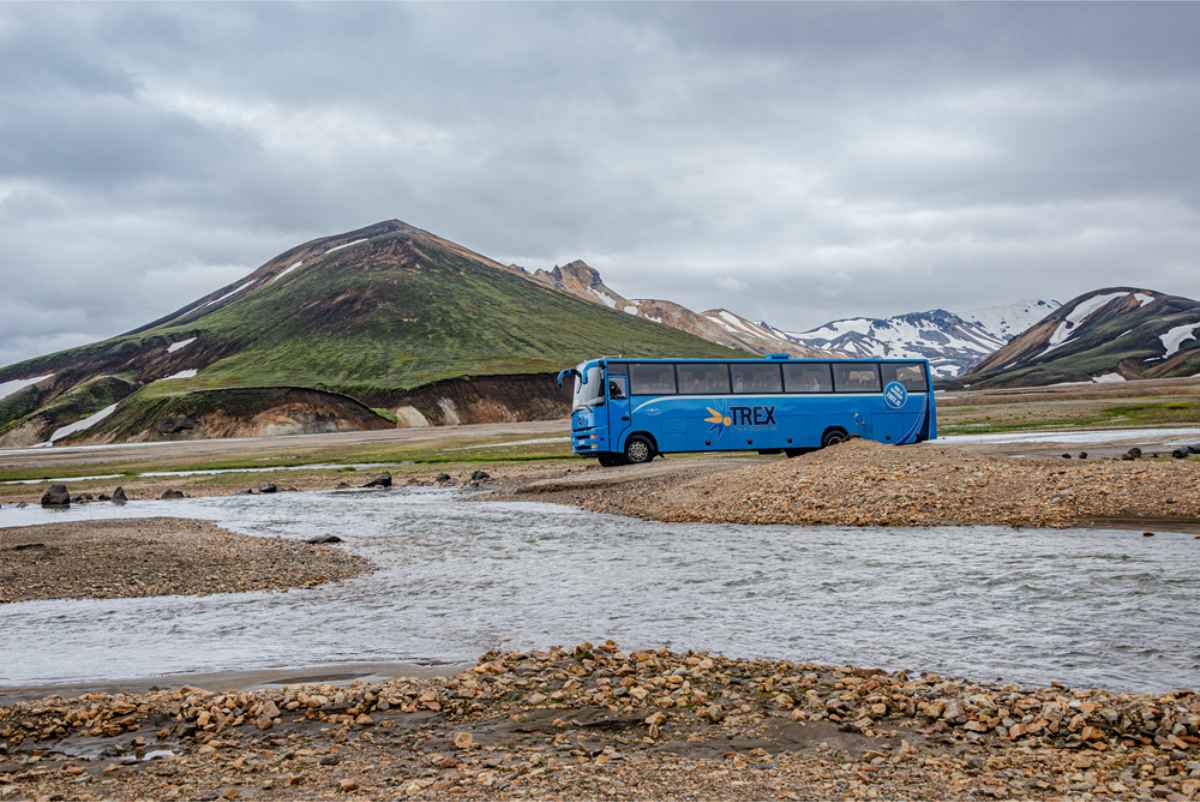
Can I Camp Anywhere on an F-road Road Trip with My Camper?
Wild camping is no longer allowed in Iceland without explicit permission from the land owner, but it’s not really needed anyway. There are plenty of super affordable campsites all around the country, especially if you’ve purchased the Camping Card.
Final Thought: The Call of the Highlands
Road-tripping the F-roads in Iceland in a camper promises to be the experience of a lifetime (at least for those who come prepared and respect our environment). A journey through this untamed wilderness is both a test of nature and a celebration of nature’s grandeur. So, pack your bags, rent a camper in Iceland, and embrace the adventure of the F-roads in Iceland!

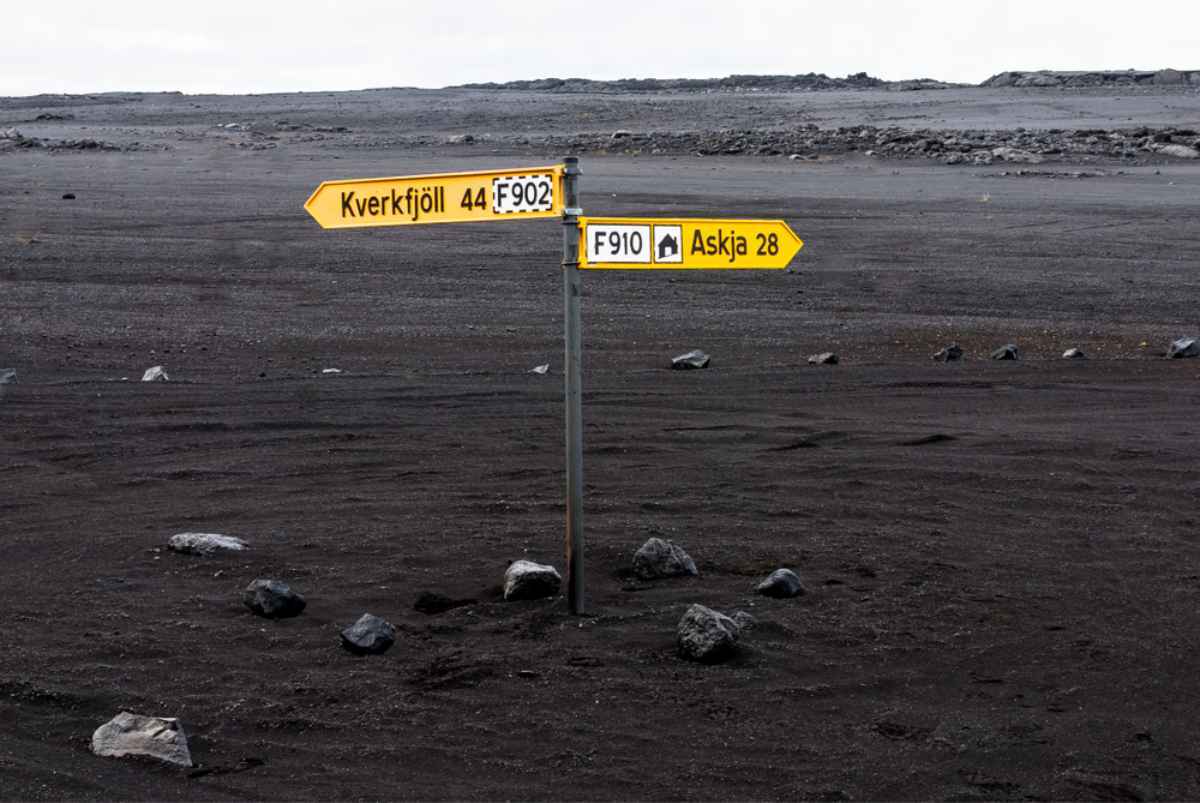
 By
By


